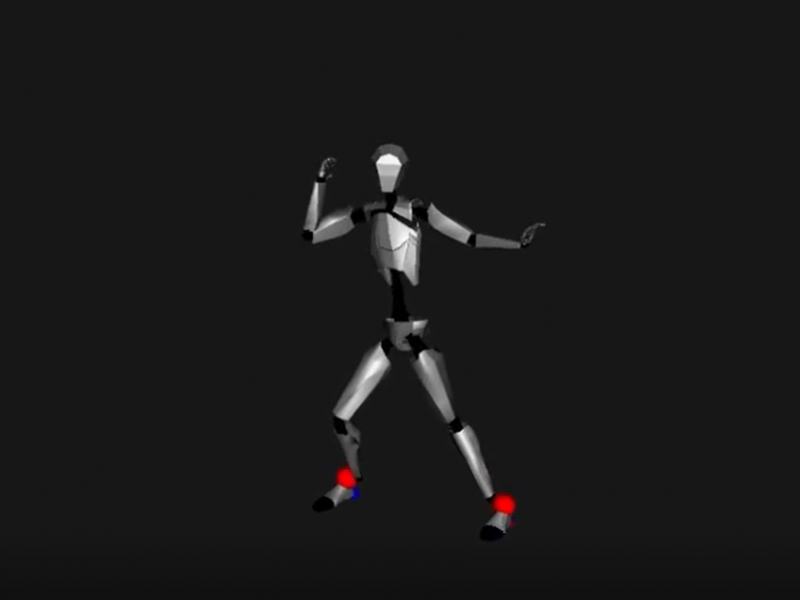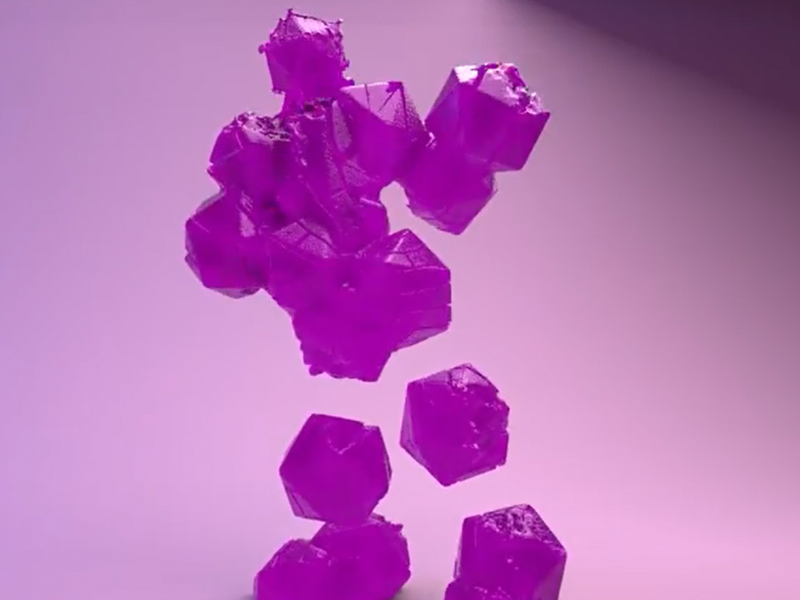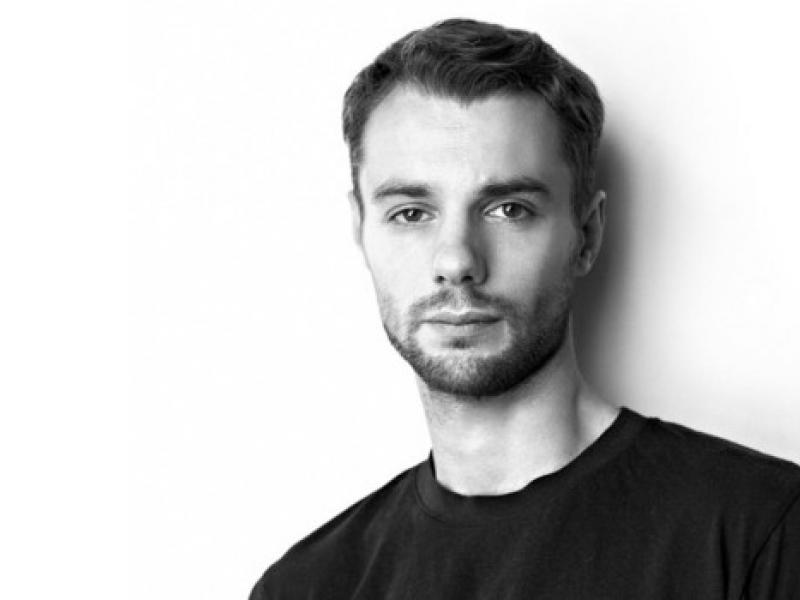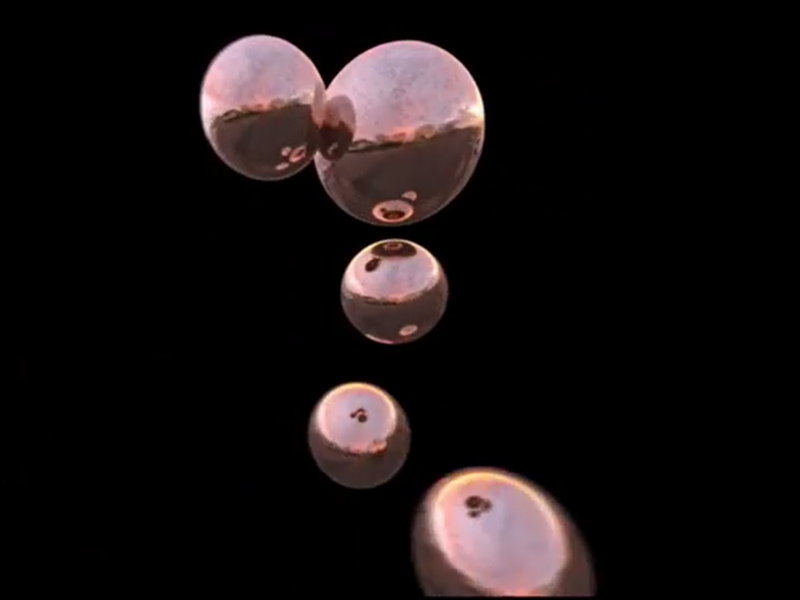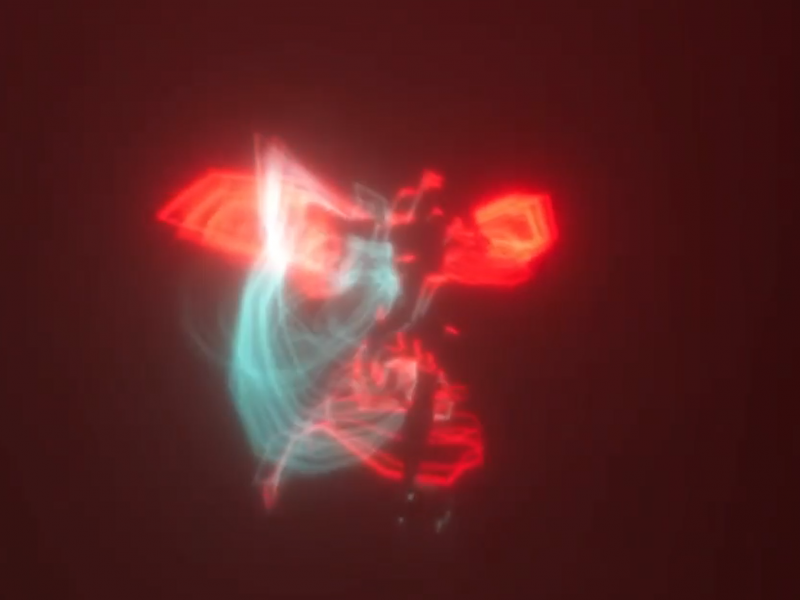London-based dancer and choreographer Alexander Whitley has created a way to continue collaborating with his company of dancers during Covid-19. No longer able to perform, create or rehearse together due to social distancing, Whitney was feeling despondent until his passion for technology inspired him to think outside the dance studio.
Capturing his own choreographed dances with a Perception Neuron motion capture suit, Whitney was able to create a space where the artistic community could access that motion data to develop their own interpretations of his dance movements. The Digital Body Project is an exploration of how dance and choreography can exist in a purely digital form.
"I'm deeply curious about how far you can modify the form of the body and still recognise it as being human, or possessing human qualities. I'm also really interested in how new forms of dance performance can be created through the use of this kind of technology."
Having worked with motion capture technology over the past several years, Whitney has been merging his dance background with his love of technology, creating interactive dance productions and virtual reality experiences. "I got funding last year to do some more in-depth research in this area with my company," shares Whitley. "Having been impressed with the Perception Neuron (motion capture system) in the past, I decided to buy a few to play with."
Whitley would have been well on his way to beginning a new technology-and-dance-infused production, when like everyone else, he was stopped by Covid-19. Although he's tucked away at his countryside quarantine retreat in Cumbria, he can continue to enjoy seeing his choreography come to life through the interpretations of others, albeit, digitally. The consummate dancer has always been curious about the melding of dance and technology.
"I've wanted for some time to create a series of short digital dance films to showcase the extraordinary range of possibilities for how human movement can be transformed through 3D motion graphics", he explains. "I'm deeply curious about how far you can modify the form of the body and still recognise it as being human, or possessing human qualities. I'm also really interested in how new forms of dance performance can be created through the use of this kind of technology."
When the Covid-19 crisis hit and all of his work was cancelled, Whitney took the opportunity to get stuck in the project, seeing it as one of the few ways he could continue to choreograph and collaborate during the lockdown. It was through a conversation with his friend and longtime collaborator, Memo Akten, that he realised there was an opportunity to open the project up to a wider community of artists by creating a free repository of the mocap data on his website. Using a Perception Neuron V2 motion capture system, Whitney has been able to give his dancers-and visual artists everywhere-a bridge to connect their creativity during this time when physical contact isn't possible.
Whitney is quick to admit that for all of his love for digital technology, he doesn't quite have the skills to program the visuals himself, and instead leaves that up to his bevy of talented friends who work with software such as Cinema 4D, Unity, and Notch to transform the mocap data he shares with them.
"This is actually one of the most enjoyable parts of the project for me; that I can create something and pass it on to others to work with and be surprised and delighted by what they do with it. Collaboration has always been a huge part of the process of making dance productions (think of the composers, lighting designers, costume/set designers etc) and through this project I'm extending that process into new territory."
Though all of Whitney's work is being done in post so far, he hopes to soon begin creating in real-time. He believes the interpretations of his choreography, and seeing how the visuals work with the motion of the body, will allow him to create movements that will bring out their most interesting features. Still adjusting to a new world, one where we are all forced to test the boundaries of digital communication, Whitney has time to contemplate the very near future and how an event such as a pandemic can impact the performing arts.
"It's potentially huge when the whole theatre industry is shut down. The longer this crisis goes on, the more the performing arts will have to look seriously at alternative ways to create and distribute content and motion capture offers a lot of exciting possibilities for this," posits Whitney. "Not only for capturing more of the three dimensional detail of performance, but for imagining new ways in which traditional art forms can be experienced. There's more incentive now than ever before to dive deeply into exploring what we can do with these kinds of technologies."
See all of the Digital Body Project entries at @whitneydance on Instagram. To learn more and participate, visit The Digital Body.
Capturing his own choreographed dances with a Perception Neuron motion capture suit, Whitney was able to create a space where the artistic community could access that motion data to develop their own interpretations of his dance movements. The Digital Body Project is an exploration of how dance and choreography can exist in a purely digital form.
"I'm deeply curious about how far you can modify the form of the body and still recognise it as being human, or possessing human qualities. I'm also really interested in how new forms of dance performance can be created through the use of this kind of technology."
"I've wanted for some time to create a series of short digital dance films to showcase the extraordinary range of possibilities for how human movement can be transformed through 3D motion graphics."
Having worked with motion capture technology over the past several years, Whitney has been merging his dance background with his love of technology, creating interactive dance productions and virtual reality experiences. "I got funding last year to do some more in-depth research in this area with my company," shares Whitley. "Having been impressed with the Perception Neuron (motion capture system) in the past, I decided to buy a few to play with."
Whitley would have been well on his way to beginning a new technology-and-dance-infused production, when like everyone else, he was stopped by Covid-19. Although he's tucked away at his countryside quarantine retreat in Cumbria, he can continue to enjoy seeing his choreography come to life through the interpretations of others, albeit, digitally. The consummate dancer has always been curious about the melding of dance and technology.
"I've wanted for some time to create a series of short digital dance films to showcase the extraordinary range of possibilities for how human movement can be transformed through 3D motion graphics", he explains. "I'm deeply curious about how far you can modify the form of the body and still recognise it as being human, or possessing human qualities. I'm also really interested in how new forms of dance performance can be created through the use of this kind of technology."
When the Covid-19 crisis hit and all of his work was cancelled, Whitney took the opportunity to get stuck in the project, seeing it as one of the few ways he could continue to choreograph and collaborate during the lockdown. It was through a conversation with his friend and longtime collaborator, Memo Akten, that he realised there was an opportunity to open the project up to a wider community of artists by creating a free repository of the mocap data on his website. Using a Perception Neuron V2 motion capture system, Whitney has been able to give his dancers-and visual artists everywhere-a bridge to connect their creativity during this time when physical contact isn't possible.
"The longer this crisis goes on, the more the performing arts will have to look seriously at alternative ways to create and distribute content and motion capture offers a lot of exciting possibilities for this."
Whitney is quick to admit that for all of his love for digital technology, he doesn't quite have the skills to program the visuals himself, and instead leaves that up to his bevy of talented friends who work with software such as Cinema 4D, Unity, and Notch to transform the mocap data he shares with them.
"This is actually one of the most enjoyable parts of the project for me; that I can create something and pass it on to others to work with and be surprised and delighted by what they do with it. Collaboration has always been a huge part of the process of making dance productions (think of the composers, lighting designers, costume/set designers etc) and through this project I'm extending that process into new territory."
Though all of Whitney's work is being done in post so far, he hopes to soon begin creating in real-time. He believes the interpretations of his choreography, and seeing how the visuals work with the motion of the body, will allow him to create movements that will bring out their most interesting features. Still adjusting to a new world, one where we are all forced to test the boundaries of digital communication, Whitney has time to contemplate the very near future and how an event such as a pandemic can impact the performing arts.
"It's potentially huge when the whole theatre industry is shut down. The longer this crisis goes on, the more the performing arts will have to look seriously at alternative ways to create and distribute content and motion capture offers a lot of exciting possibilities for this," posits Whitney. "Not only for capturing more of the three dimensional detail of performance, but for imagining new ways in which traditional art forms can be experienced. There's more incentive now than ever before to dive deeply into exploring what we can do with these kinds of technologies."
See all of the Digital Body Project entries at @whitneydance on Instagram. To learn more and participate, visit The Digital Body.
External URL:
